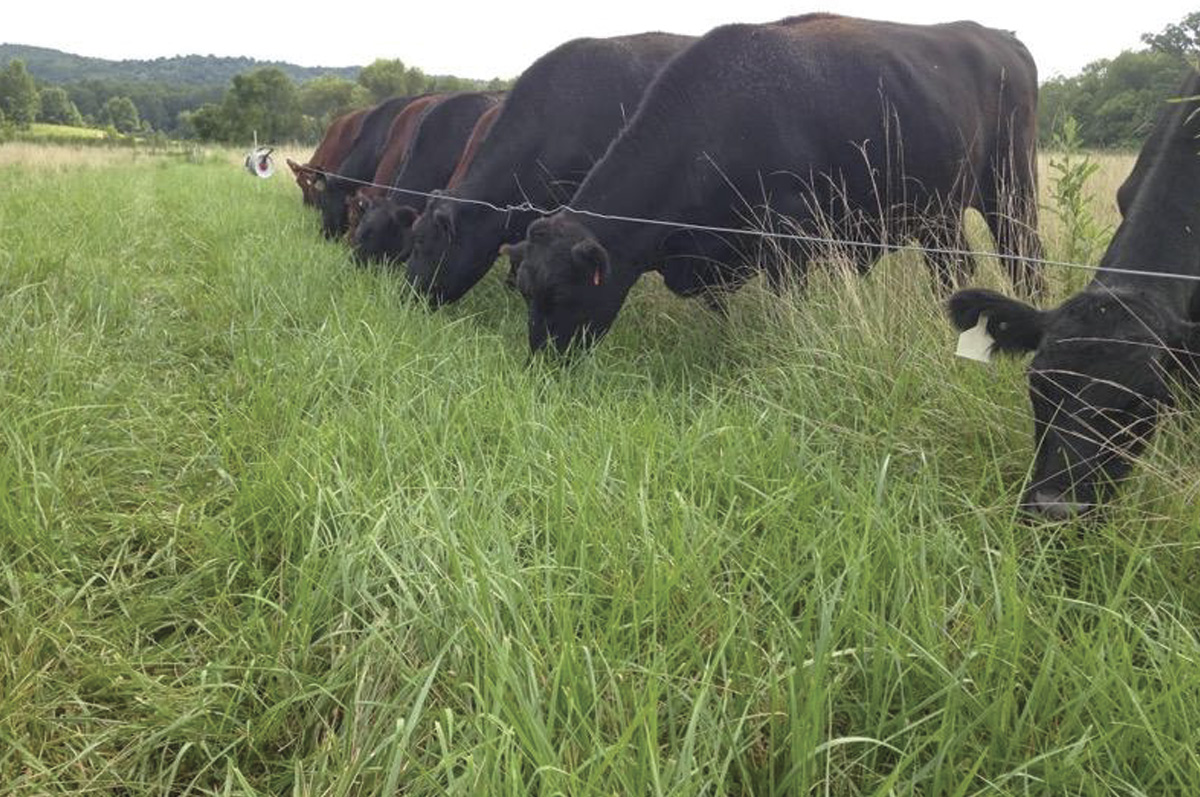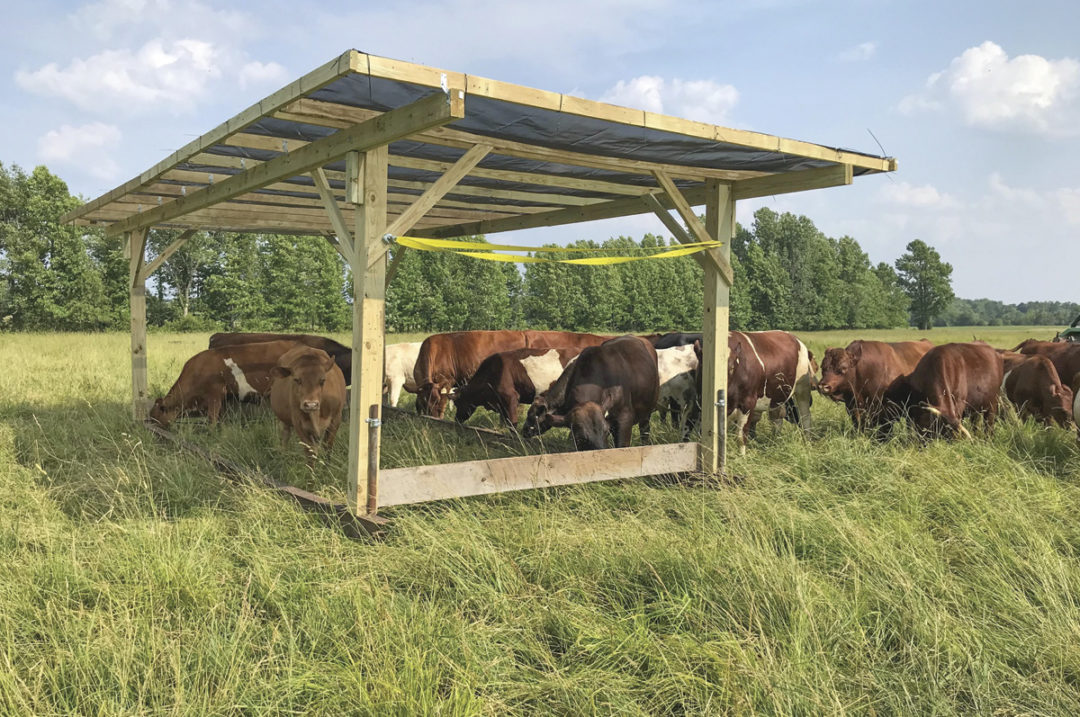Overgrazing pastures and rangeland have detrimental consequences on cattle, forage, soils and producers’ bottom lines. “Avoiding overgrazing and resource degradation is a high priority,” says Tom Hilken, the Natural Resources Conservation Service (NRCS) national grazing specialist in Oregon. There might be more options to avoid overgrazing in higher rainfall areas, but regardless of location, overgrazing has similar detrimental impacts, and prevention strategies work in rangeland and pastures across the country.
Routinely overgrazed land becomes less productive, impacting the number of cattle it can support. But when we take a closer look at overgrazing, it isn’t a straightforward issue concerning the number of cattle.
Overgrazing isn’t a function of numbers
Jeff Goodwin, director of the Texas A&M Center for Grassland and Ranch Management, defines overgrazing as grazing a plant a second time before fully recovering from the previous grazing. “Overgrazing is a function of time, not necessarily a function of numbers,” Goodwin says.
Goodwin looks at overgrazing not from the scale of a pasture or rangeland but at the plant level. The crux of the issue lies with plants not having enough time to regrow before they are grazed again.
Plants need their leaves to survive. Think back to your school days: Photosynthesis enables plants to take in carbon dioxide from the air, water from surroundings, nutrients from the soil and energy from the sun, transforming it into nutrients (carbohydrates) and oxygen. Leaves act as solar panels. Without enough leaf area, the entire system begins to fall apart.
If plants have sufficient leaf area or food stored in their roots and adequate moisture – they grow. However, plants die if nutrient reserves are low and there are not enough leaves to make food through photosynthesis.
Detrimental impacts
“Without adequate time to recover after grazing, plant health suffers, causing them to be more susceptible to insects, disease and drought,” North Dakota Range Management Specialist Jonathan Fettig says. However, the detrimental effects of continuous overgrazing extend beyond individual plants, disturbing the entire ecological system.
Microscopic life within soil, water and carbon storage in soil, forage diversity and the land's carrying capacity are all negatively affected. Cattle health and performance also suffer, as can wildlife, Fettig notes.
“Weakening desirable plants by continuous grazing allows invasive species to move in,” Fettig says. “Soil is exposed to wind and rain, permitting moisture evaporation and erosion. There is also a decrease in organic material that feeds soil microbes, and hydrological function within soil is decreased.”
The plant composition of the land influences the soil’s capacity to hold and store rainwater, Fettig explains. “Native plants and bunchgrasses tend to have deeper roots, facilitating deeper water infiltration. Shorter root systems of invasive species don’t allow water to penetrate as deep, reducing soil’s ability to capture rainfall.”
Avoid overgrazing with a grazing plan
The good news is that a flexible grazing plan and consistent monitoring can prevent overgrazing and avoid the negative impacts on land and cattle.
Goodwin noted there is a large continuum of grazing strategies, from multipaddock systems with multiple daily moves to continuous grazing systems where cattle manage the forage. “Continuous grazing can lead to increased selectivity and overutilization of desirable forages in parts of the pasture or range or underutilizing undesirable plants, resulting in those species proliferating,” Goodwin says.
However, pastures are only overgrazed when not given enough time to recover, even if grazed past the “take-half-leave-half” rule of thumb.

Use temporary fencing to add more flexibility to your grazing plan. Photo by Denice Rackley.
Rest and recovery
Recovery is vital for plant health and is the key to avoiding overgrazing. Goodwin points out that recovery and rest are different. “Recovery is the time needed for plants to regrow and, therefore, can only occur during the growing season,” he says.
Recovery time varies with plant species and climate conditions, but the height of plants doesn’t necessarily signify readiness for grazing. Rest can happen any time cattle are not in the pasture, but depending on the season, the plants may not be recovering.
With adequate rainfall and temperatures, most grasses begin to regrow within three days of being grazed. This tender, nutritious growth attracts livestock, and it is here that producers get into trouble.
Grazing considerations
Grazing management comes down to regulating the intensity, frequency, duration and timing of grazing, Hilken says. “Good grazing plans include a contingency plan for ‘what if’ scenarios,” he says.
What will happen if drought, flood or fire throws a curve ball into your grazing plan? Will cattle be culled, calves weaned and stored feed utilized? Can cattle be moved to an alternate pasture?
To develop a grazing plan, Fettig suggests starting with a plant inventory and production calculation. “NRCS grazing specialists can assist you with the carrying capacity of your land and then help you match forage production of the land with the forage requirements of your cattle,” he says.
Manage pastures and rangeland for those species you want, Goodwin advises. “Allow the preferred species to determine when and how long cattle can be grazed, but make sure the selected species make up a reasonable proportion of the pasture’s production.” Generally, better grazing management over time will promote the species that function best in your environment.
Consistent monitoring is key
Monitoring for plant diversity and growth, including other indicators, such as soil health characteristics, will signal when adjustments are needed for the grazing plan. “Monitoring is where many producers fall short,” Hilken notes. “The best monitoring options are those that are done consistently, and it’s critical to account for variations in plant communities, topographic features, weather and economics.”
Routine on-the-ground monitoring of forage and soil conditions allows for timely adjustments. Strategic placement of water, salt and other minerals can improve livestock distribution and attract cattle to underutilized forage areas. Adding temporary fencing, additional water sources or shade may also lessen the impacts of cattle. Goodwin mentions patch burn grazing as another grazing management tool, where a portion of the pasture is burnt to encourage new growth and improve forage conditions.
Photo monitoring – taking a picture of pasture or range from the exact location at the same time of year – can also be a good monitoring tool giving information on production and species diversity, Fettig suggests.
Good management = increased productivity of both cattle and forages
Grazing pastures at different times each year aids in maintaining species diversity, and don’t forget to consider cattle performance in a grazing plan.
“Grazing to meet the nutritional needs of heifers may require you to graze just the top one-third of the forage,” Goodwin notes. For example, one strategy might be moving heifers quickly through pastures, allowing them to eat the most nutritious forage and following immediately with dry cows able to utilize the remaining forage.
Build in some flexibility to grazing plans. Having a contingency plan and consistent monitoring that acknowledges conditions are rarely perfect enables us to make timely adjustments.
Good grazing plans – whether moving cattle multiple times a day, set stocking or something in between – that match forage production with the nutritional needs of cattle can help avoid overgrazing and lead to increased productivity of our forages and cattle.







